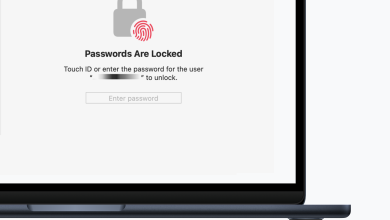3 Easy Fixes: “macOS Can’t Verify this App Free of Malware”
- The "macOS cannot verify that this app is free from malware" message appears when the user is downloading an unauthorized app.
- You can bypass this error message by disabling Gatekeeper through the terminal or system settings.
- Remember to only disable the Gatekeeper if you know that the app is from a credible source.
Are you constantly running into the “macOS cannot verify that this app is free from malware” issue while installing an app on your Mac? Guess what? You aren’t alone. This problem has been occurring for quite some time, and there seems to be no official solution to it.
In this guide, we will tell you why it happens, its triggers, and what you can do to make sure your Mac stays secure. So, let’s get into it.
Table of Contents
What Does “macOS Cannot Verify That This App Is Free From Malware” Means?
This macOS issue typically arises when a user tries to download an application that is not authorized from the App Store or any third-party app like your work or school software. Apple has a built-in software, “Gatekeeper,” which prevents malware from entering your system.

This doesn’t imply that what you are downloading is malicious software; it’s just that Apple doesn’t recognize the legitimacy of the app and prevents its installation.
Below, we have mentioned different ways to resolve this problem. We’re not going to list generic solutions that are unhelpful, but instead offer a list of curated fixes that we’ve tested ourselves.
READ MORE: How to Download Netflix for Mac – 4 Different Ways ➜
How to Fix the “macOS Cannot Verify That This App Is Free From Malware” Issue
To fix the “macOS cannot verify that this app is free from malware issue,” you first need to make sure that whatever app you are installing on your Mac is free from all kinds of viruses. If you’re unsure of the app’s legitimacy then do not install it, plain and simple.
That being said, if you know that the unauthorized app is legitimate and will not cause any problems to your system, follow the below-mentioned methods to bypass the error.
1. Turn Off Gatekeeper
Since the issue’s primary trigger is Gatekeeper’s presence, it would be best to turn it off. Here’s how you can do that:
Disabling Gatekeeper on your Mac can compromise its security by allowing the installation of apps from unverified sources. Proceed with caution, as this increases the risk of downloading malicious software. Only disable Gatekeeper if you are confident about the legitimacy and safety of the apps you intend to install.
↪ Via System Settings
- Go to System Settings > Privacy & Security.
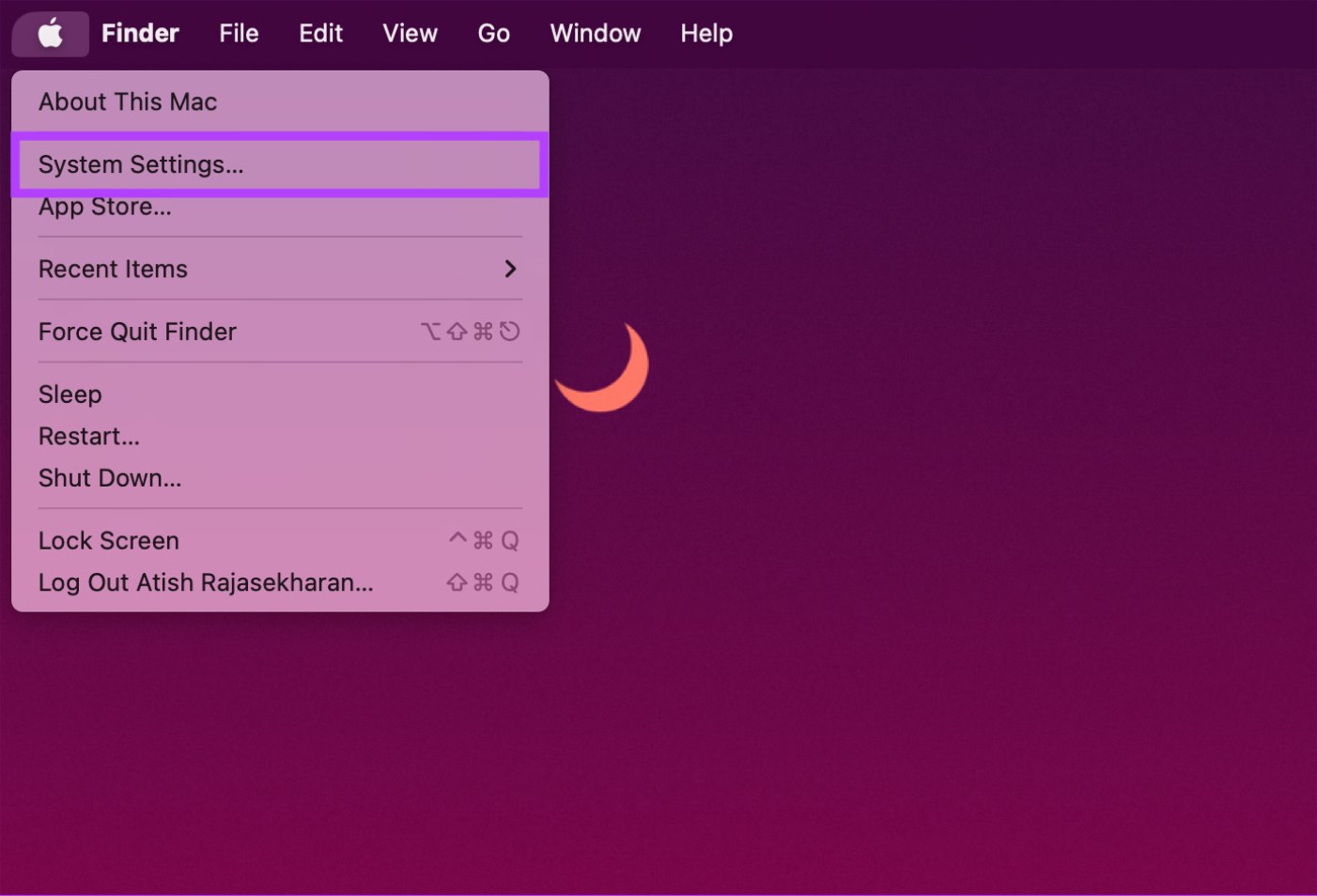
Click on System Settings - Under the Security tab, click on the “Anywhere” option.
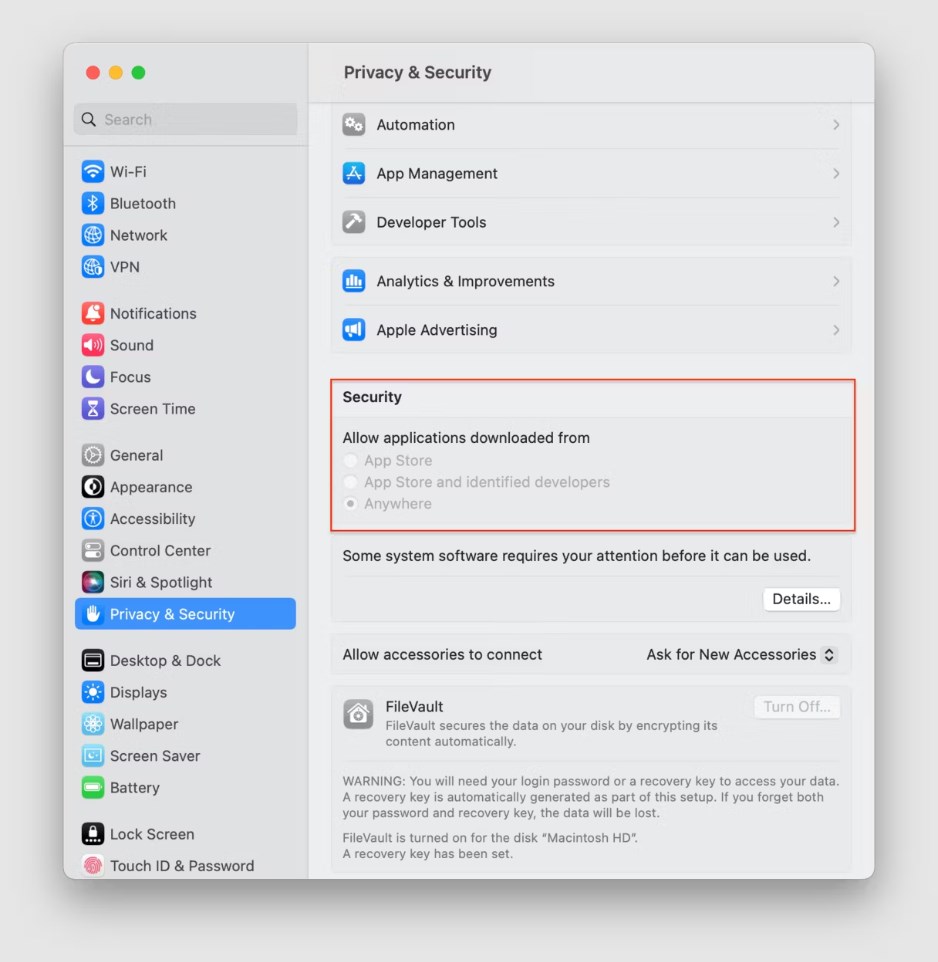
Select Privacy & Security > Anywhere | MacPaw
↪ Via Terminal
- Press Command + Spacebar to bring up Spotlight Search. Simply type “terminal” and press Enter.
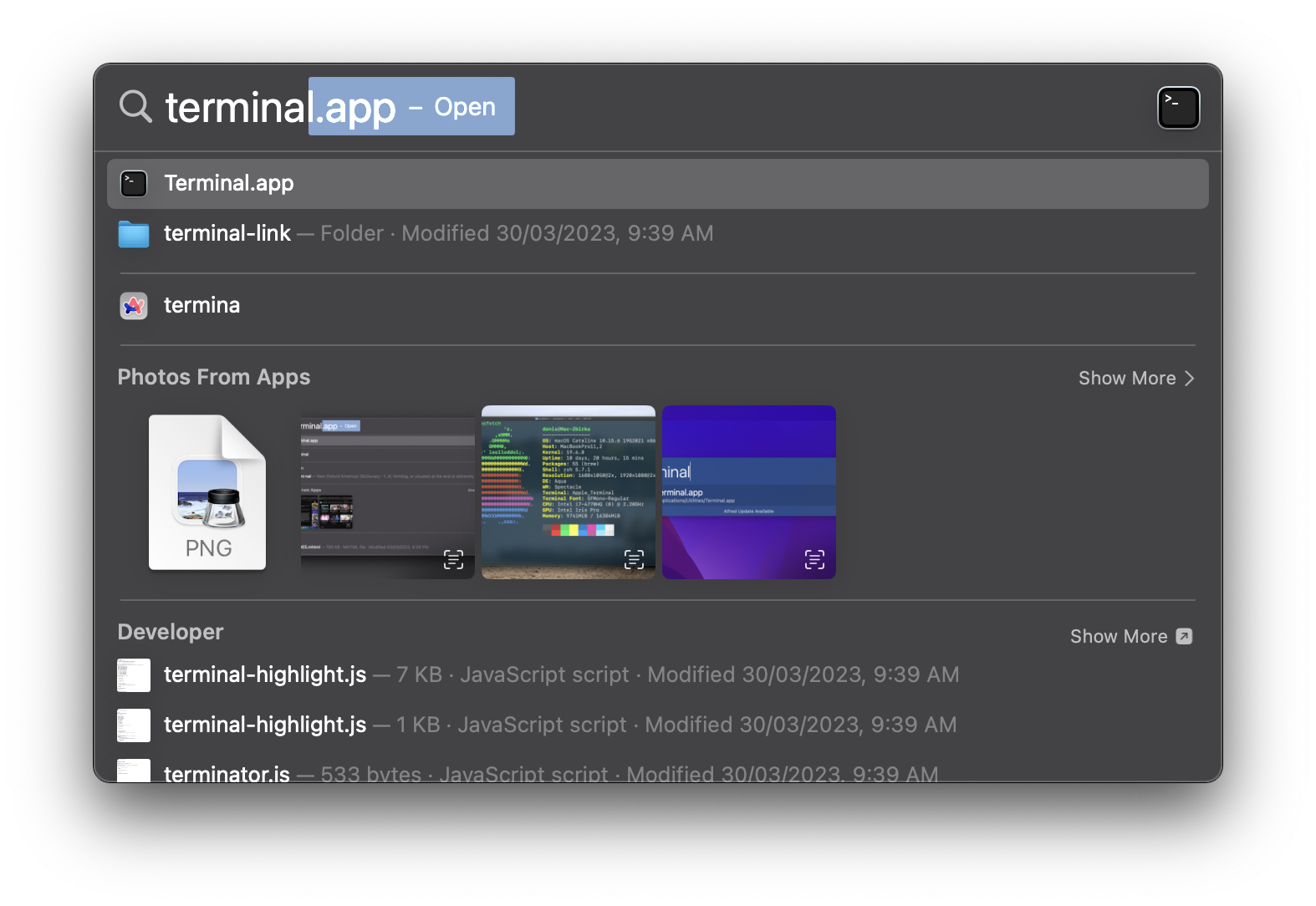
Opening Terminal by searching for it with Spotlight - Type the following command: sudo spctl –master-disable
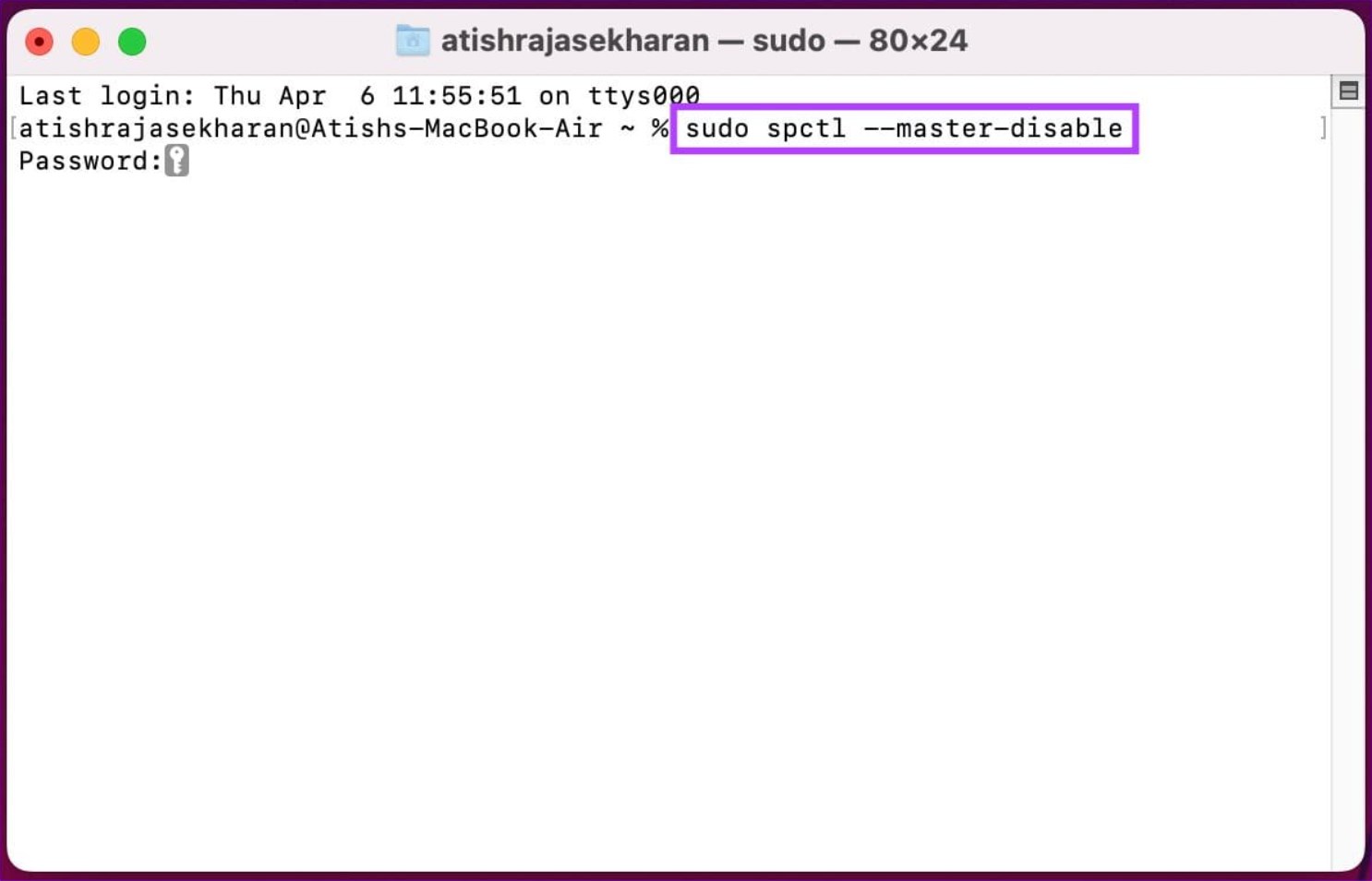
Type “sudo spctl –master-disable” command - Press the Enter key and enter your Mac’s password upon the next prompt.
2. Open the Application Anyway
If you are sure about the application’s legitimacy, like if it’s your school or work software, you can install and open it anyway. To do so, follow these steps:
- Navigate to System Settings > Privacy & Security.
- Under the Security tab, a message will say, “[Unauthorised app’s name] was blocked from use because it is not from an identified developer.” Click on the “Open Anyway” button located right under it.

Select Open Anyway - You can use your Touch ID or enter the password and click on “Modify Settings.”
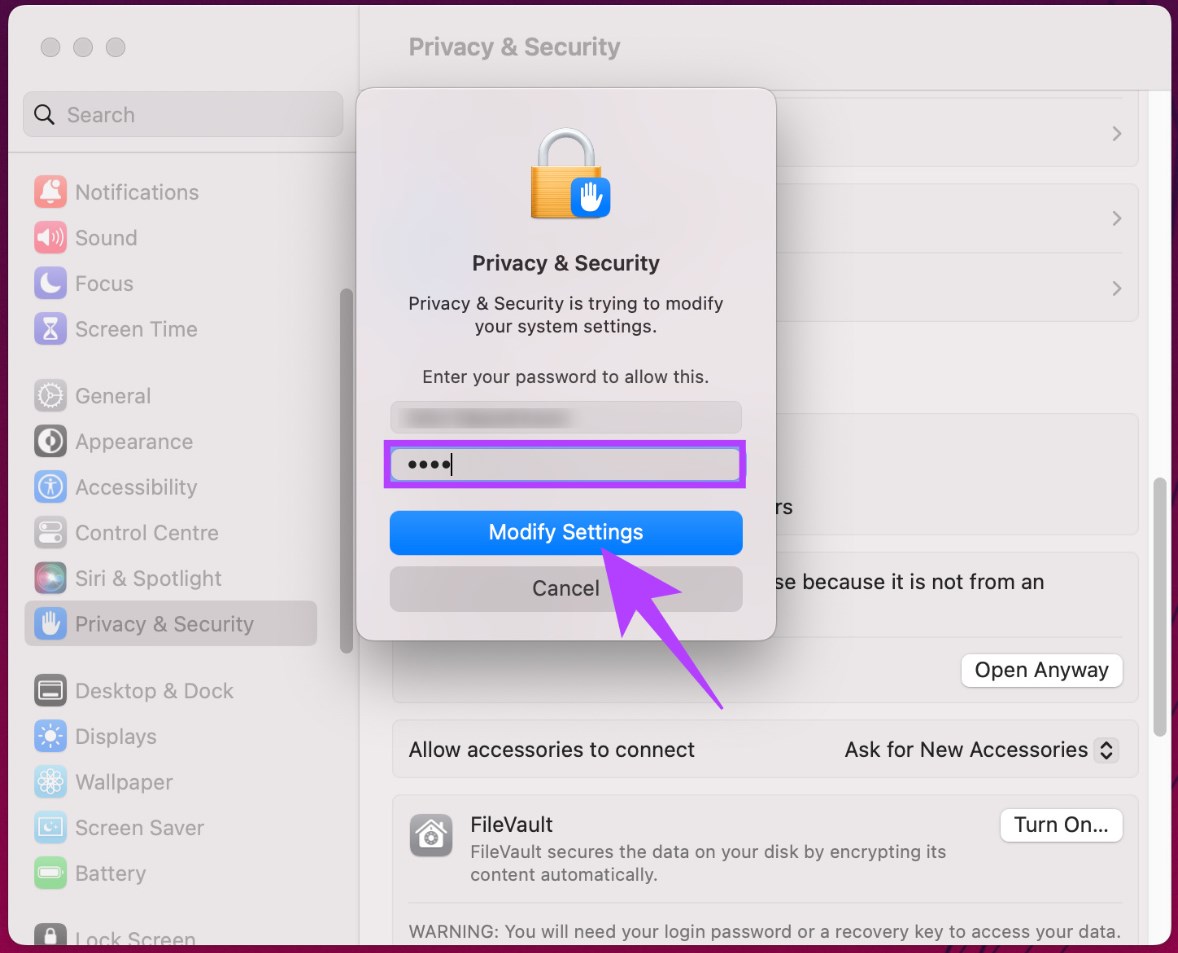
Select Modify Settings - Finally, select “Open” on the confirmation window.

Confirm by selecting Open
3. Use Control Click
Utilizing Control Click to open the application marks it as safe on your Mac. Follow the below-mentioned process to open it:
- Press the Command + Space keys, type “Finder,” and click on the Enter key.

Select Finder - Once in Finder, navigate to “Applications.”

Select Applications - Locate the app, hold down the Control key, and click on the application to select “Open.”

Click on Open - In the prompt, click “Open” to launch the app.
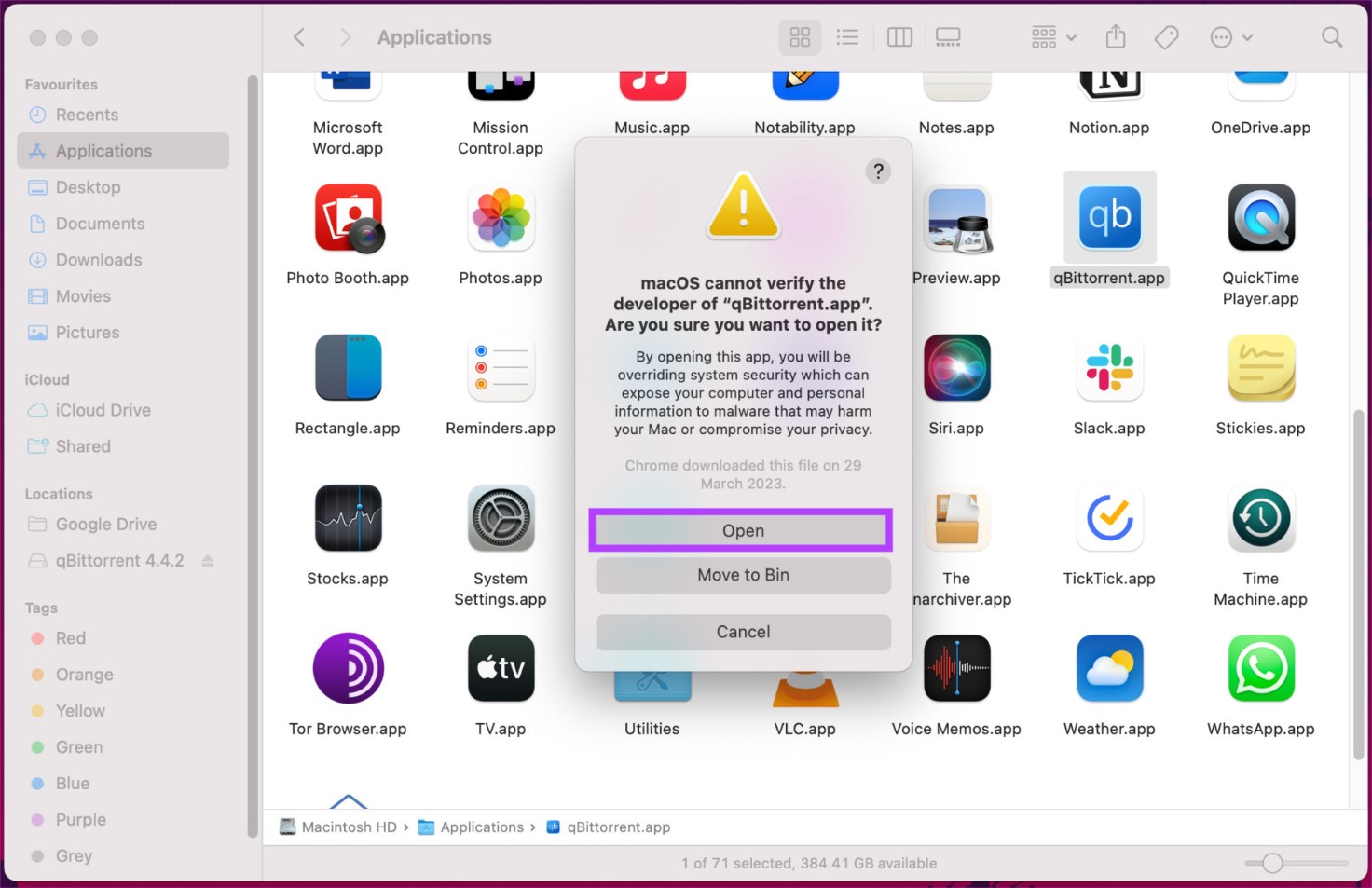
Confirm by clicking on Open
Images sourced from Guiding Tech.
READ MORE: Apple Just Made The Best Windows Games Emulator for MacOS ➜
Final Words
Thats it. Now, you know that the “macOS cannot verify that this app is free from malware” message is just a caution, so don’t panic. It’s just your Mac being alert about the safety of an application.
You can also consider reinstalling the app. Simply delete it from your Mac, and redownload it from a reliable source, such as the App Store or the official developer’s website. This process ensures that the app undergoes Apple’s verification process, reducing any security concerns.
Always remember to choose apps carefully from trusted vendors and check their sources. Stay cautious, and you’ll navigate your digital world smoothly, keeping your Mac safe from potential issues.
FAQs
While it doesn’t necessarily mean the app is harmful, it’s a cautionary signal. Consider the source of the app; if it’s reputable, the risk may be low. However, exercise caution and, if possible, reinstall the app from a reliable source.
To reinstall the app, delete it from your Mac and download it again from either the App Store or the official developer’s website. After reinstallation, try installing the app once more, and the error should be resolved.
Yes, aside from reinstalling, you can use third-party antivirus software to scan the app for potential threats. While macOS has built-in security measures, additional scans can provide an extra layer of assurance before installing or using an application.
Yes, occasionally, this message may appear due to a false positive. The app might be safe, but certain changes or updates trigger the warning. In such cases, checking for updates or contacting the app developer for reassurance can help.




